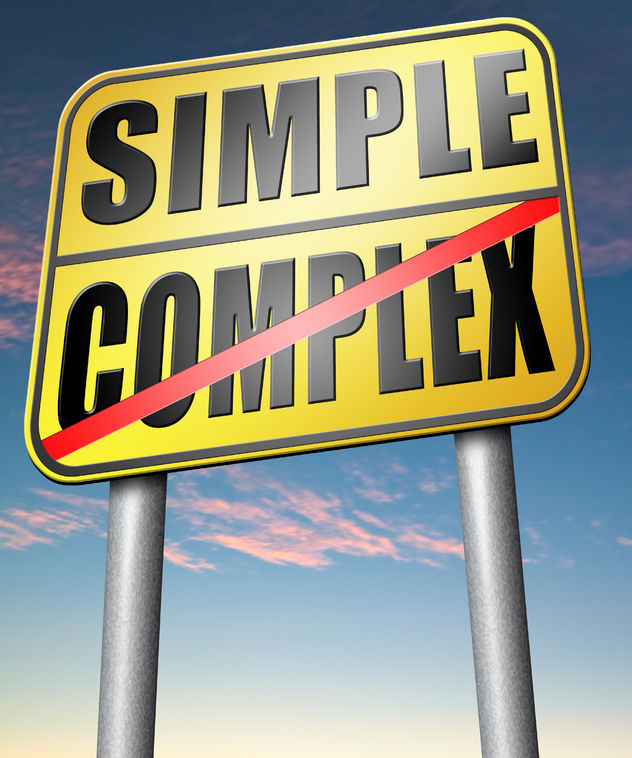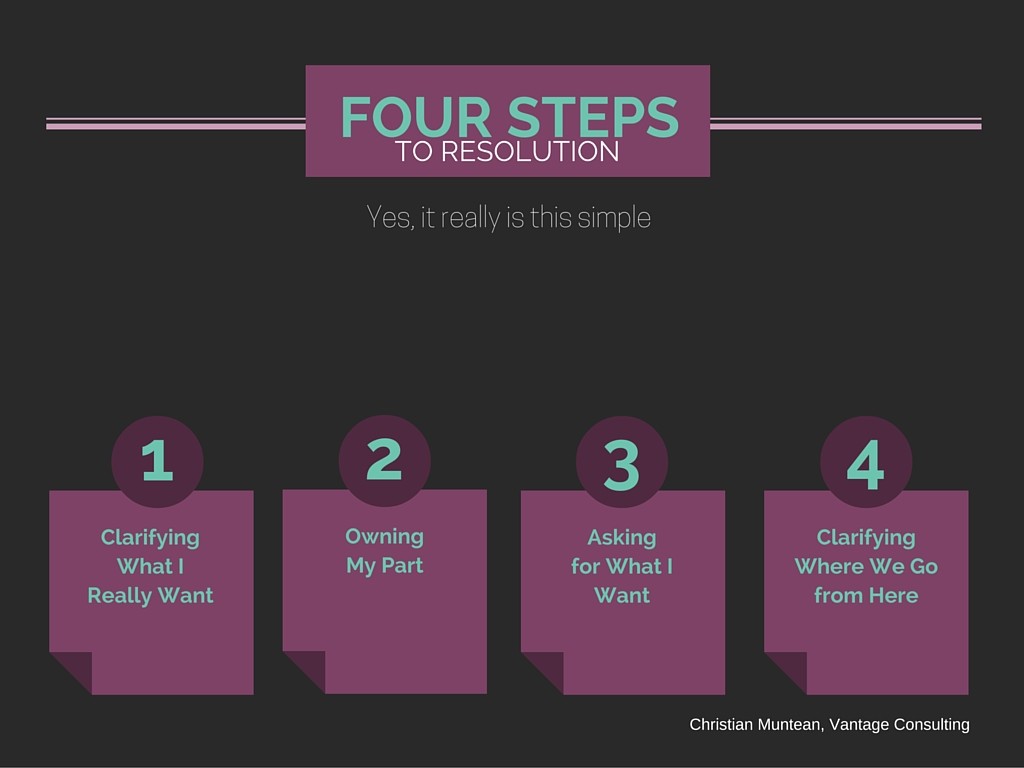Resolve Conflict in Four Steps

Resolving Conflict Really IS This Simple!
Most of my life I’ve had no idea how to resolve conflict. When I felt offended, threatened, betrayed or irritated at something I’d either go into “Attack Mode” or “Avoidance Mode”. For me, “Attack Mode” looked either like a steady layering-on of sarcasm or full-on argument-to-the-death. “Avoidance Mode” usually meant I either avoided having to interact with the person, or I just stuffed things until I finally blew up. Perhaps you relate?
No More Pyrrhic Victories
In 280 BC and 279 BC, King Pyrrhus of Epirus fought two devastating battles with the Romans. He soundly beat the Roman army both times. However, his losses were extraordinary. An overwhelming number of men were killed or injured, included many of his friends and principal commanders. When congratulated for his victory he replied, “If we are victorious in one more battle with the Romans, we shall be utterly ruined.”
As you probably imagine, the approaches I described above rarely resulted in a worthwhile “win.” That’s the thing about relationships at work, as well as at home. It’s difficult to “win” without losing. What’s the point of winning in an office argument or power struggle if we’ve broken trust with, offended, or alienated ourselves from those around us? That is a Pyrrhic victory. The bragging rights aren’t sweet. If we successfully win (or even successfully avoid addressing the person or issues) we ultimately lose in the end.
It Doesn’t Have to Be So Difficult
Resolving conflict doesn’t need to be that difficult. In my experience, as a mediator, more than 80% of all disputes we facilitate are resolved. Eighty percent! Nearly all of them will arrive saying, “There is no hope. We’ve tried everything. They (the other side) are totally unreasonable.” This 80% resolution rate tells me most people actually want resolution – they just don’t know how to get there. The truth is, most of the time, “getting there” doesn’t have to be difficult.
The Four Steps
- Clarifying What I Really Want: The First Step to Resolution is to gain clarity on what I really want. This seems obvious; but most people actually aren’t able to articulate what they really want. This is evidenced by how often, when we ask, “What would resolution look like to you?” We hear, instead, what the other person doesn’t want to have happen anymore.
“I don’t want to be bossed around anymore.”
“I don’t want the lousy attitude.”
“I don’t want to have to do X.”
Unfortunately, just saying what we don’t want doesn’t tell us much about what we do want.
I encourage clients to think about answering this question two ways:
- How do I think people should relate to each other in these situations? How do I want to be treated?
- What do I want as a solution?
- Own My Part: Owning my part of the conflict is the most important step. I can’t tell you how often I’ve seen this step be the one that unlocks a conflict. When people are willing to “own their stuff” it becomes so easy to resolve the dispute. When people are not willing to – it takes much longer.
It’s difficult though. I never want to acknowledge that I might have contributed to the conflict. I’m too emotionally invested in the other person being a horrible human being. However, many times, I actually have contributed in some way to either starting or perpetuating the conflict. I just don’t know how. Accepting that, or being willing to explore that, doesn’t mean absolving the other person of their responsibility. However, it often does start a more effective conversation.
I often encourage people to consider these questions:
- What assumption might I be making about facts or motives? What “facts” have I accepted that haven’t been confirmed?
- How has the other person experienced me during this situation? Have I consistently shown integrity regarding how I believe people should relate to each other in these situations? Am I treating them like I would like to be treated?
- Ask For What I Want: This might seem obvious; but it often escapes us. We often assume the other person(s) know what we want. We assume they can read our mind. Our case, or our cause, seems so self-evident and obvious; everyone should be able to easily know what we want.
But, often they don’t. So, it serves the conversation well to be able to tell the other person, specifically, what a solution looks like to us. Some ideas to make this more helpful:
- Separate the problem from the person.
- Focus on a single issue – not a laundry list of complaints.
- Be open to the possibility of more than one acceptable solution.
People who own their stuff, and are clear about what they want, are able to negotiate far more successfully.
- Clarify Where We Go From Here: Once all sides have come to an agreement, a conflict can still leave things feeling weird. Did we resolve things? Are things right between us? Do I trust you? Sometimes, we aren’t sure. It helps to discuss what’s needed to make things right between everyone involved. Some questions I often ask people to consider are:
- What is needed to fully put this issue behind you?
- Are there any changes to this relationship as a result of this situation? What are they?
- What have I learned about myself and what I need to relate well?
- What have I learned about you and what you need in order to relate well?
Try it out – you’ll create your own opportunity….
The thing about conflicts is, most of us create our own opportunities to practice resolving them better. It’s been my observation and experience that, as you practice the Four Steps above, you’ll find your conflicts will resolve faster than before. You may even find that your relationships are stronger than before. Working through a conflict with someone can be a deep demonstration of commitment to the relationship. It’s often a place to gain deeper insights into each other and help create better shared understanding for the future.
If you’d like to work with me directly to help you resolve a workplace dispute contact me here.
Article Categories
Popular articles

Download my free 10-page eBook:
How To Accomplish More Without Doing More:
Eight Proven Strategies To Change Your Life
Discover how to save eight hours during your workweek-even if you're too busy to even think about it. The resource every maxed out executive needs.
